Solar radiation storm in progress
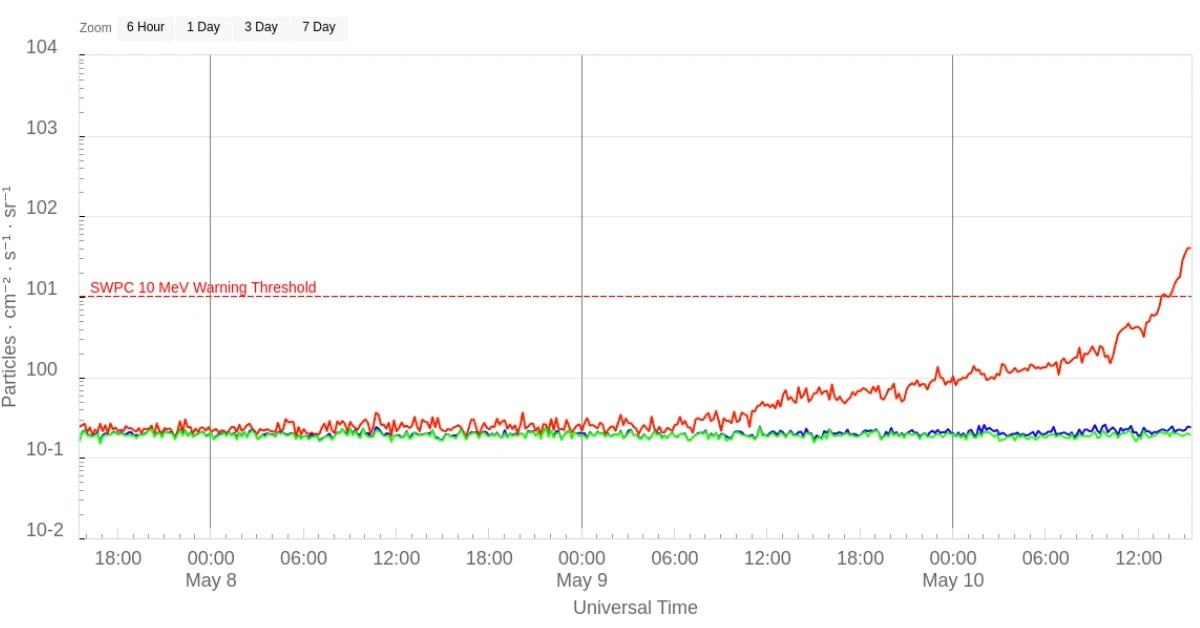
Proton flux started rising after 07:00 UTC on May 9, 2024, due to increased flare activity from very large and complex Active Region 3664, and reached the S1 – Minor solar radiation storm threshold on May 10.
As activity in this region continued, with numerous M- and several X-class flares, proton flux levels kept rising and reached the S1 – Minor solar radiation storm threshold at 13:55 UTC on May 10.
This level is the lowest on NOAA’s five-level scale for solar radiation storms and is generally associated with minor impacts on high-frequency radio communication in the polar regions.
Proton counts continued rising and reached S2 – Moderate levels at 17:46 UTC.
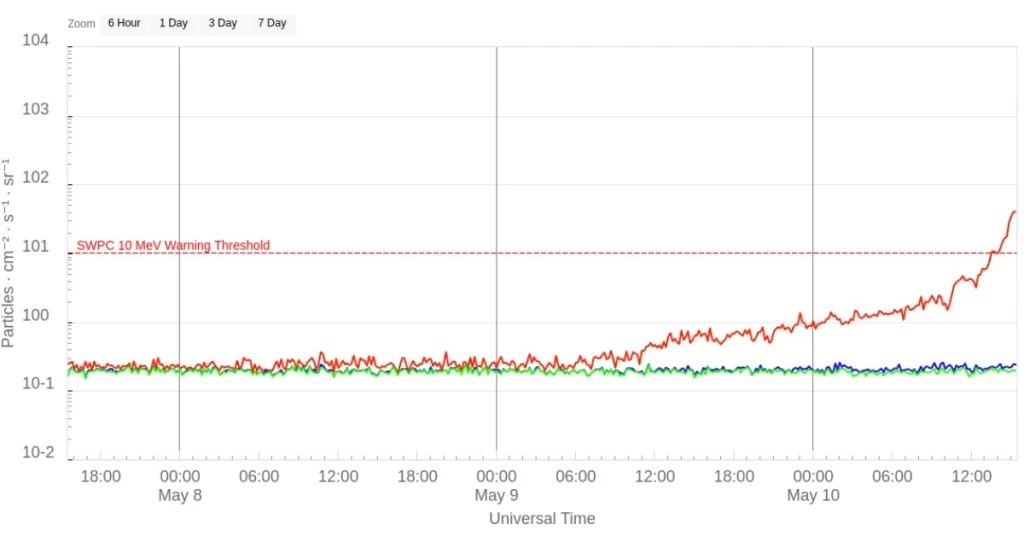
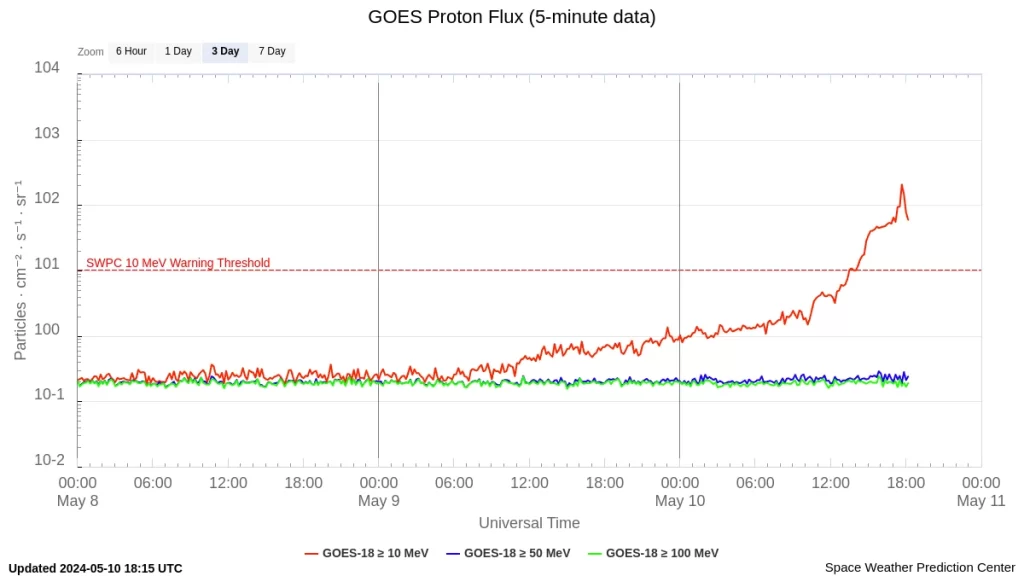
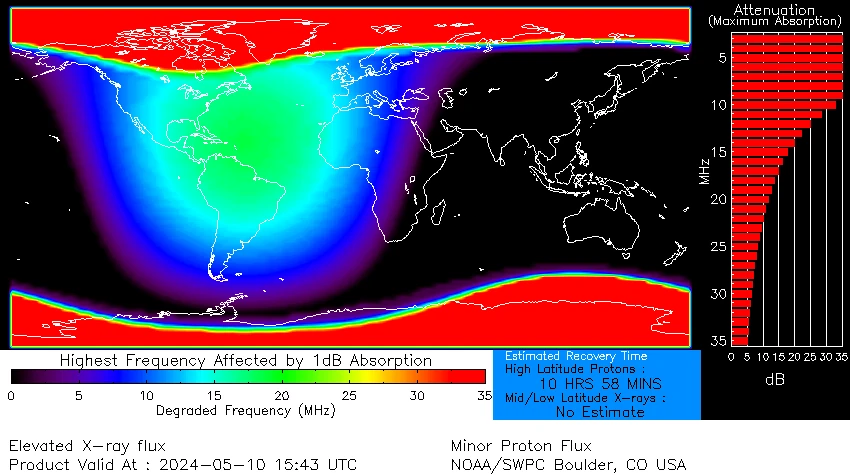
According to NOAA, solar radiation storms occur when large-scale magnetic eruptions, often causing coronal mass ejections (CMEs), accelerate charged particles in the solar atmosphere, most importantly protons, to speeds close to the speed of light.
Protons can cover the 150 million km (93 miles) from the Sun to Earth in just a few minutes.
Once they reach Earth, they penetrate the magnetosphere, which normally protects us from lower-energy particles. Guided by Earth’s magnetic field lines, these high-velocity protons are funneled into the atmosphere near the north and south poles.
Solar radiation storms have multiple effects near Earth. When high-energy protons collide with satellites or astronauts in space, they can penetrate deeply, potentially damaging electronic circuits or altering biological DNA. In severe solar radiation storms, passengers and crew on high-altitude flights near the polar regions can also be exposed to increased radiation.
Additionally, when these energetic protons interact with Earth’s atmosphere, they ionize atoms and molecules, creating free electrons. This process forms a layer in the lower ionosphere that can absorb high-frequency radio waves, disrupting or completely blocking radio communication.
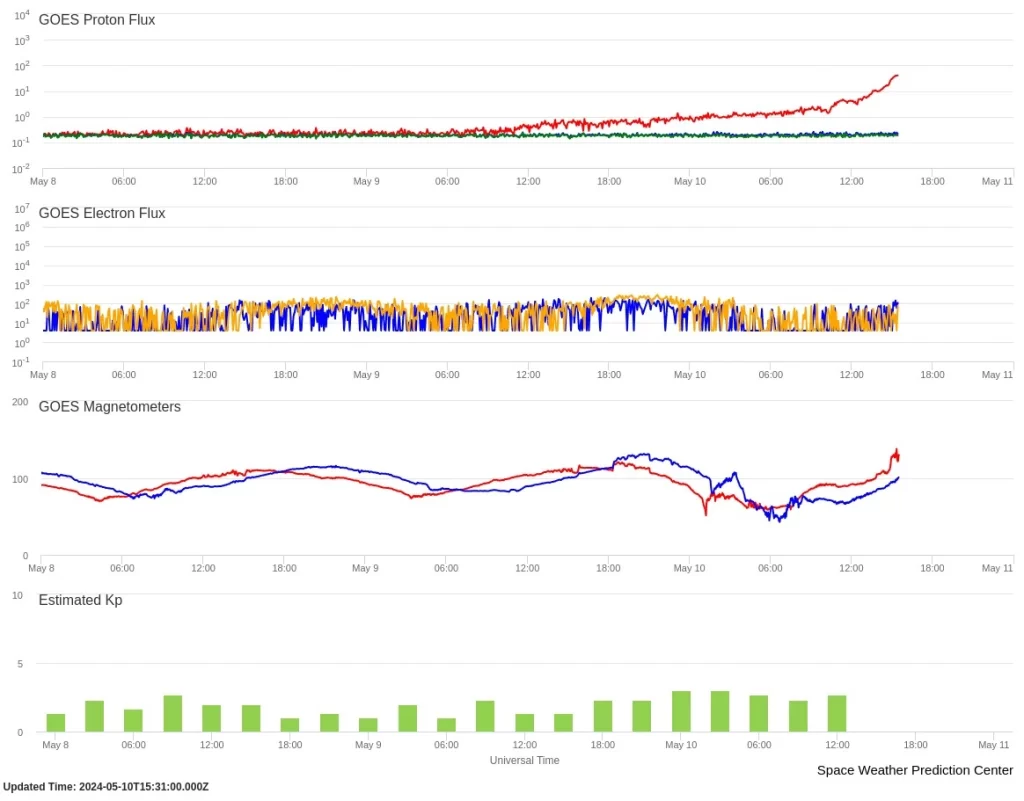
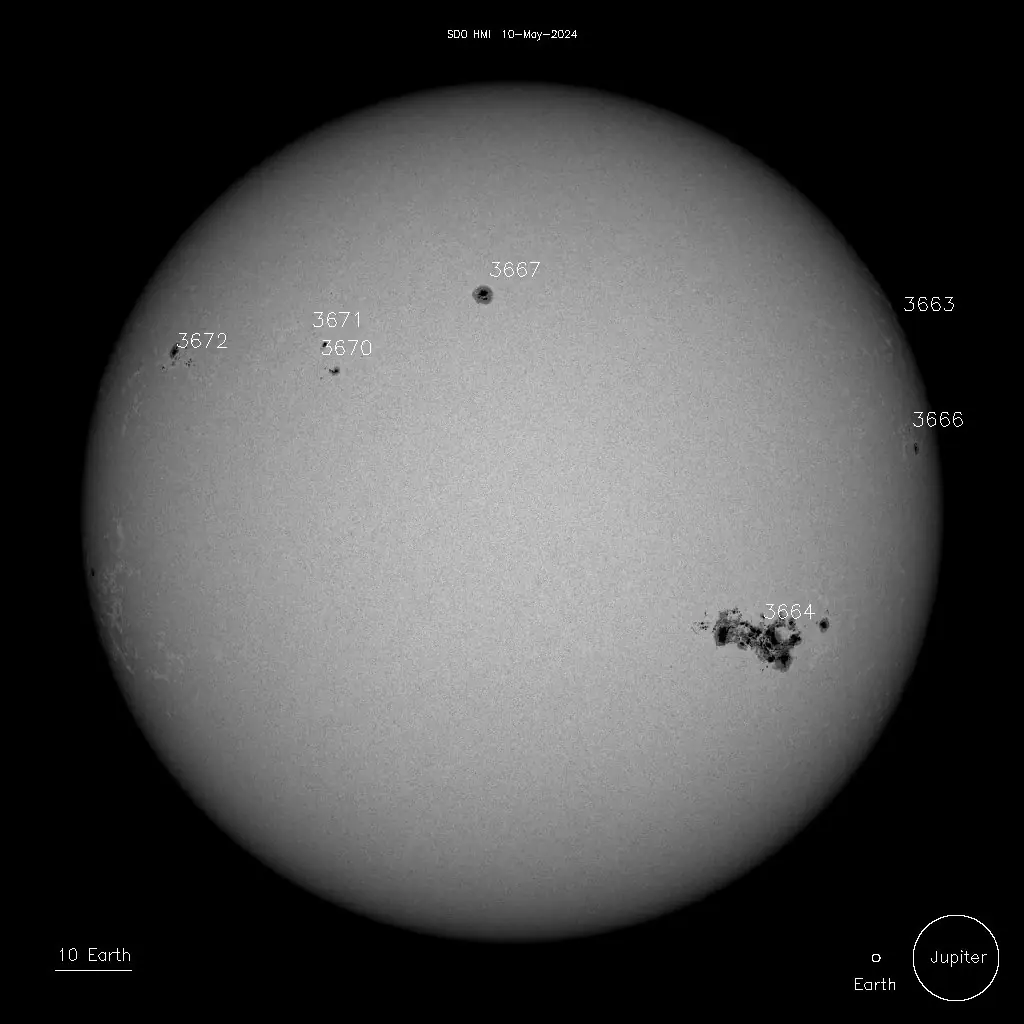
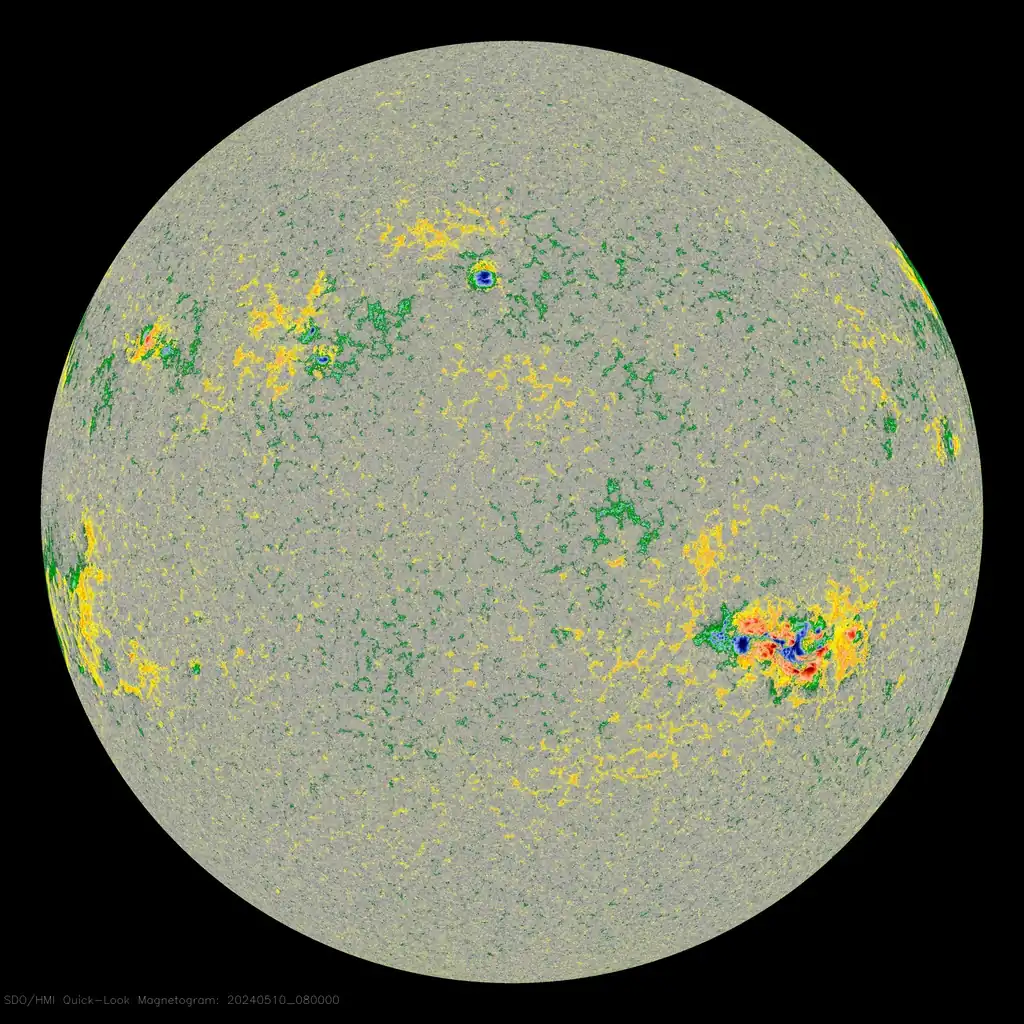
This storm is related to very high solar activity over the past 7 days, with more than 60 M-class and 10 X-class solar flares. Most of them were produced by active region 3664 (beta-gamma-delta) and 3663 (now beyond the west limb).
Even if we stay at S1 – Minor levels today, the location and strength of Region 3664 suggest an increased possibility of solar radiation storms over the next couple of days.
More than 5 coronal mass ejection (CMEs) produced by this region are expected to impact Earth over the next 24+ hours.
As a result, a G4 – Severe or Greater Geomagnetic Storm Watch is in effect for May 11. There is a good possibility this will extend into May 12 and further toward mid-month due to several incoming CMEs.
Only three G4 – Severe geomagnetic storms have been observed during this solar cycle (SC25) which began in December 2019.
The last G4 – Severe storm was on March 23, 2024, and the last G5 – Extreme was the Halloween Storm in October 2003. That G5 resulted in power outages in Sweden and damaged power transformers in South Africa.
The first CME has already hit STEREO Ahead satellite and impact data suggest we are in for some serious geomagnetic storming.
For more information about increased solar activity this week, visit:
Featured image credit: NOAA/SWPC

From the beginning of this solar cycle I was arguing repeatedly that the solar maximum will be the strongest ever recorded. On the other hand, leading solar physicists predicted that this current cycle will be a very weak one. Now, who come out to be right? That is yet another evidence that I understand how the Sun is functioning and when I say, that I know how to replicate its primary energy source, then the scientific community should take me seriously
Large magnitude earthquakes and powerful volcanic eruption is real possibility in the next 48 hours